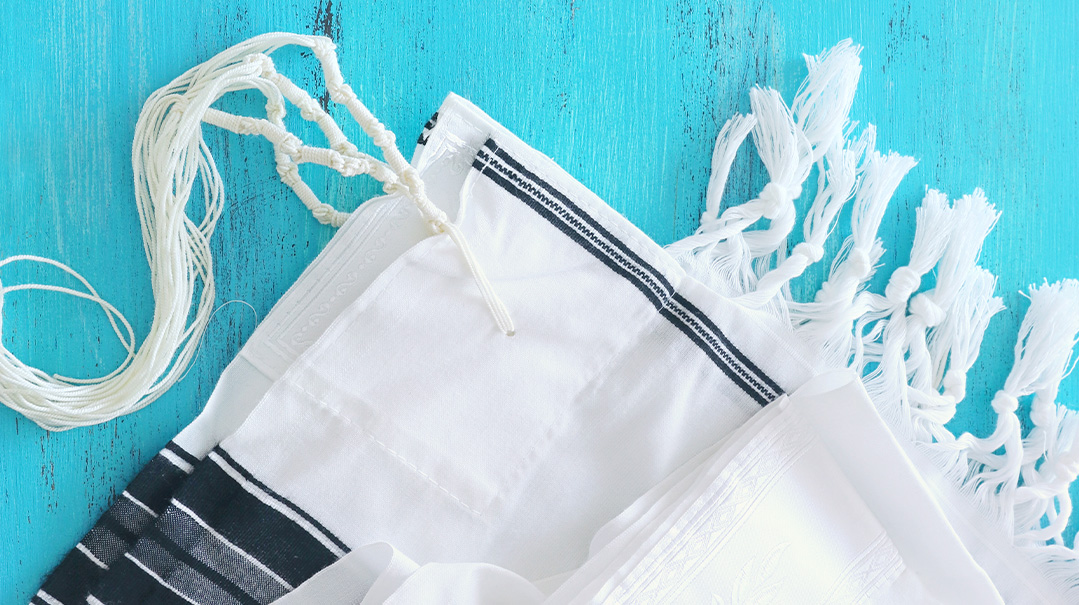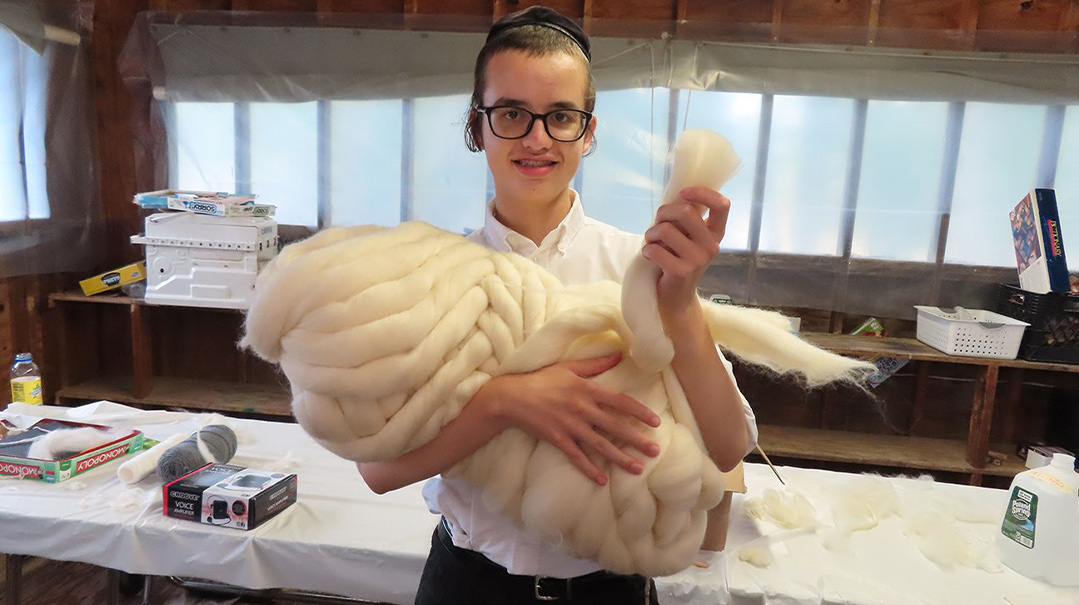16 Strings Attached
| May 10, 2022Tzitzis making 101 at Camp Yoreh Deah

Photos: Camp Yoreh Deah
You might know a cute little three-year-old who’s about to get his hair cut on Lag B’omer. And when he gets his hair cut, he’ll start wearing tzitzis too. Did you ever wonder what it takes to make a pair of tzitzis?
We met up with Rabbi Chaim Kirschbaum, the programming director at Camp Yoreh Deah, where the boys learn all kinds of halachic processes, and he told us how the boys learned to make tzitzis from the very first step to the last.
Step 1:
Catch a Sheep
According to halachah, the strings on tzitzis can either be made of wool (from sheep) or linen. Nowadays everyone makes the strings from wool — so it’s time to find a sheep.
Luckily for the campers at Camp Yoreh Deah, they have lots of animals on the grounds. The boys enter the sheep pen and choose a nice fat sheep. The sheep aren’t so excited to have the boys there, Rabbi K. explains, but once you get your hands on a sheep, they’re usually pretty accommodating.
“All winter long, Hashem makes the sheep’s hair grow longer and longer, so that he has a nice warm coat. Come summer, some sheep shed their hair, but others need the farmer to shear them. Then the big, fat sheep become skinny, scrawny sheep,” he explains.
There’s just one problem. To get the longest wool, for nice, long tzitzis strings, you need to shave the sheep at the end of the winter. But camp is in the summer, when the sheep’s wool is already short. In Camp Yoreh Deah, the boys sheer a sheep just to see what it’s like. To actually make the tzitzis, though, they use long wool that was shorn at the end of the winter.

Washing and Combing
After you get the wool, it needs to be washed and combed. You would never do that on Shabbos because those are the melachos of melabein and menapeitz.
Melabein — washing the wool
Menapeitz — combing
Lumps of wool are placed on big blocks of wood with little metal teeth sticking out. These are called minarets “combing cards.” The camp owns a few sets of combing cards, which the boys rub back and forth against each other to get all the fibers smooth and going in the right direction.
Oops! We could not locate your form.






